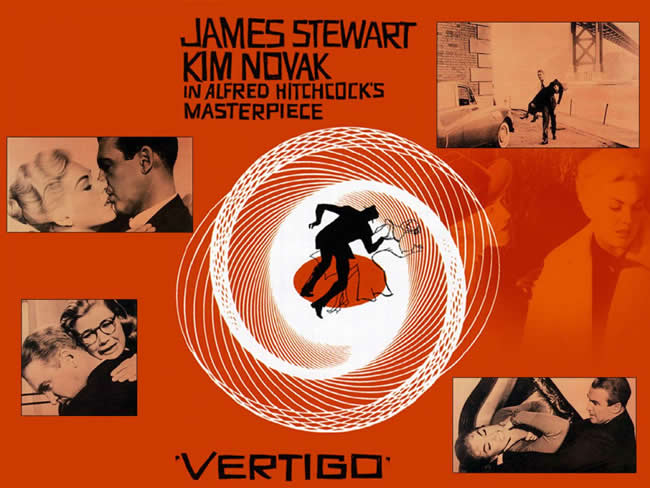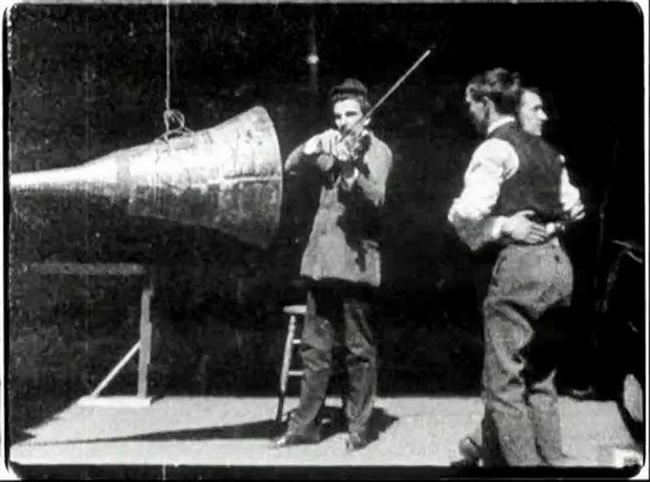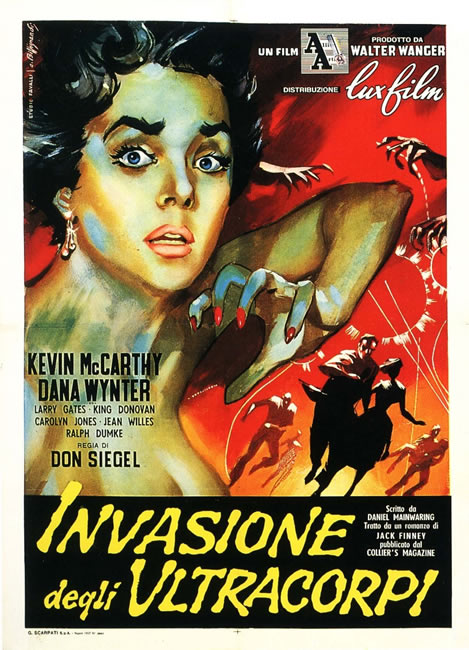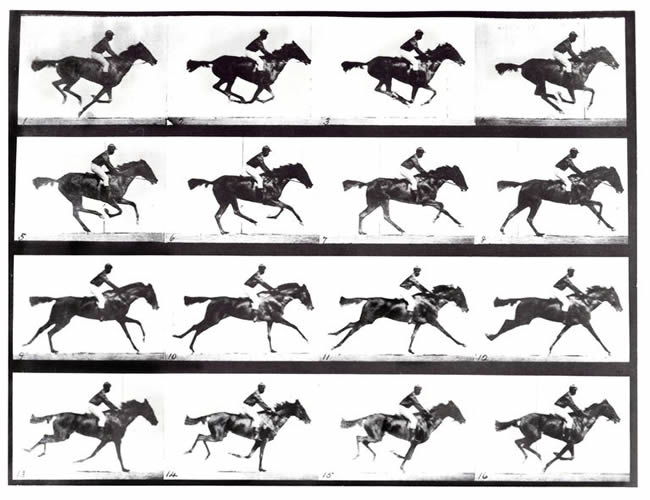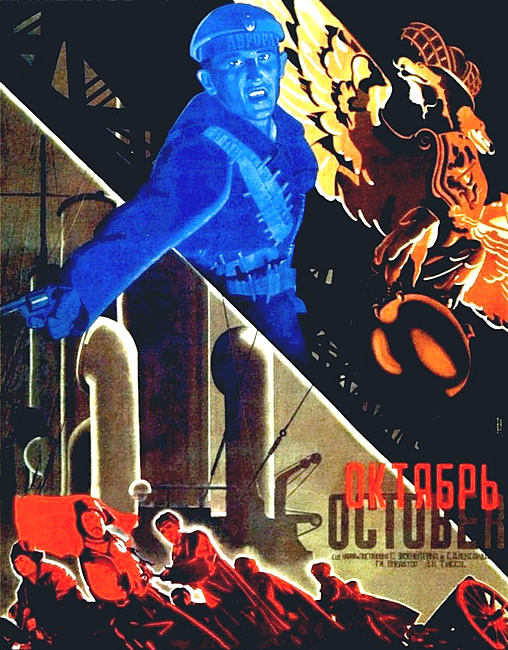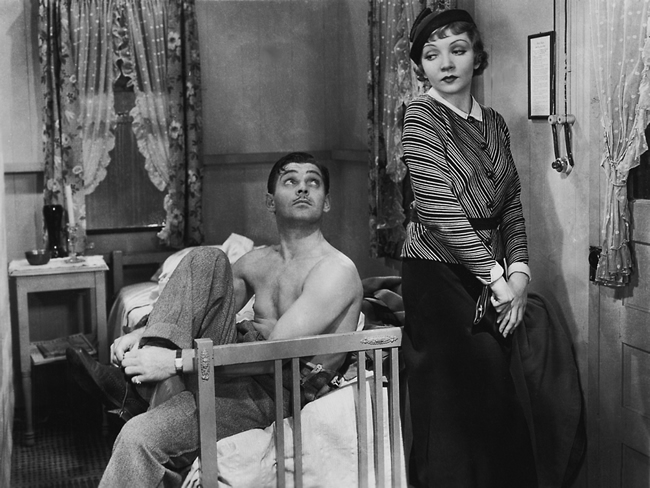
Production photo from It Happened One Night (1934)
Can a movie change clothing trends almost overnight? That’s what happened with It Happened One Night (1934) from Columbia Pictures. Here’s the scoop, according to the Internet Movie Database:
“While shooting the scene where he undresses, Clark Gable had trouble removing his undershirt while keeping his humorous flow going and took too long. As a result the undershirt was abandoned altogether. It then became cool to not wear an undershirt which resulted in a large drop in undershirt sales around the country. In response, underwear manufacturers tried to sue Columbia.”
